Our myWindsock Virtual Rider has tirelessly ridden the course to produce some super geeky data. Virtual Riders, ride the course as instructed by you. Give them a 1000 Watts, they’ll knock out 1000 Watts until you tell them to stop. The best thing is, they never get tired.
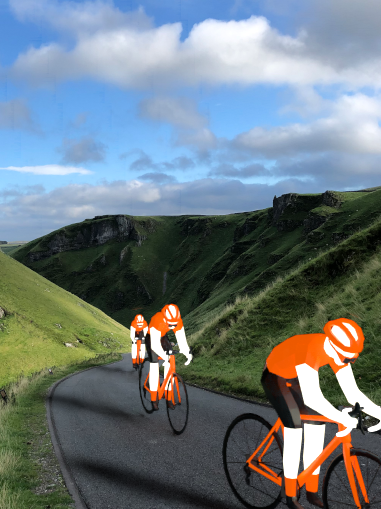
In this article we look at how best to pace the hill climb. We recommend following along and creating your own Virtual Rider with your own anticipated power, weight and up to data weather.
You may want to jump straight to the results of our pacing investigation, it is here.
Live Winnat’s myWindsock data here
Let’s get straight to it, big start or big finish!
Hill climbs all have their unique pacing strategy. A time trial isn’t a straightforward physical test. Dynamics of the course, such as gradient and air speed, should be considered when planning your effort.
Luckily, we have a simple method to demonstrate where you save the most time for the additional power.
Now, not all courses have the dynamics or weather and elevation profile to produce big variation. With “consistently steep” as Winnats description we’re not expecting dramatic changes from pacing. However a couple of seconds is likely up for grabs.
Quick experiment to get us started
First, we begin by simply adding a little bit more power to our Virtual Rider’s profile. In this example, we give our Virtual Rider an extra 10 Watts. As you’d expect, this reduced our Virtual Rider’s time. At 75kg, 10 Watts reduced the time by ~4 seconds.
The purpose of adding the additional power is to find where it had the greatest effect on our time. Next, we look for clues in the ‘Last Change Delta‘ (LCD).
Last Change Delta
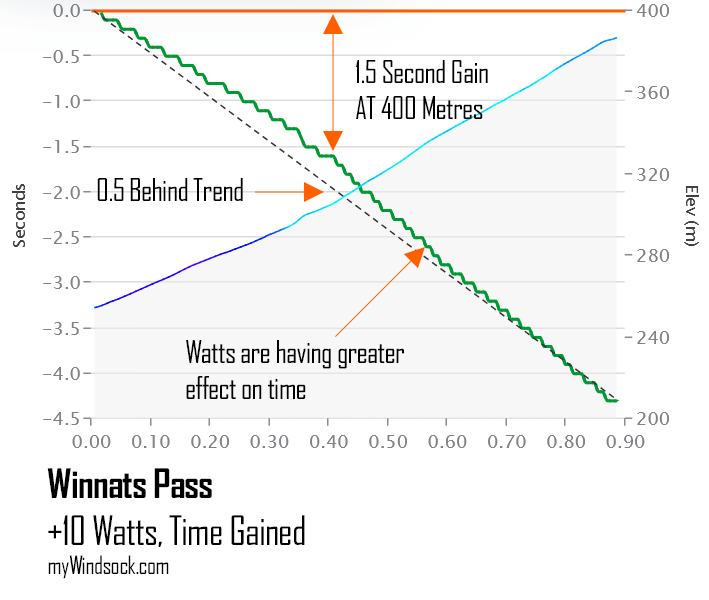
The grey Trend Line shows the average time gained or lost by your last change. The green Delta Line, is indicating we are ahead and by how many seconds.
The Delta Line would be red if we were behind. Up to ~300 metres the Delta Line is actually 0.5 seconds behind the Trend Line. This means, to this point in the race, we were gaining time slower than the overall trend. Remember we are still gaining time, just at a slower rate.
After 400 metres, or around the right hand bend, the two lines start to converge again. This indicates we are now gaining time quicker than the overall trend. We want to capitalise on the parts of the course our Watts gain time at the greatest rate.
Sometimes the variance from the overall trend is difficult to spot. The Delta Variance graph helps us to do this.
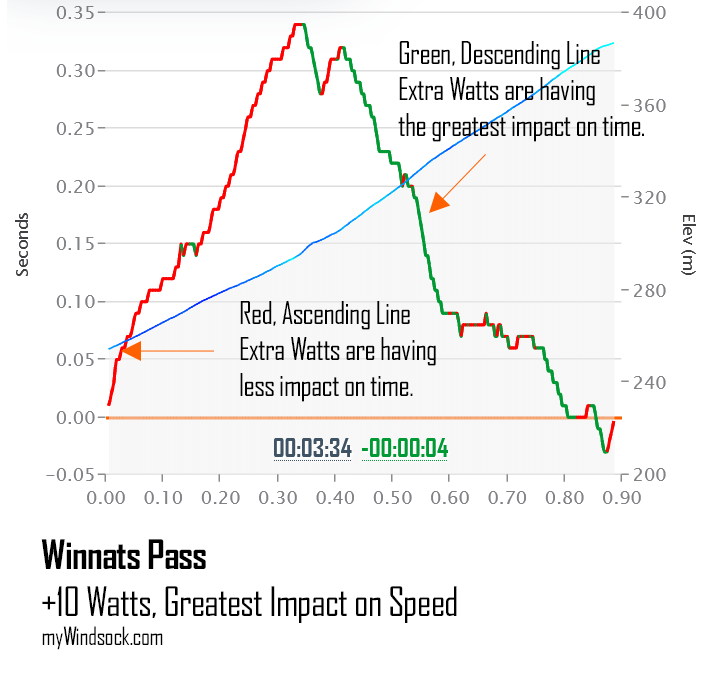
Let’s have a race
Let’s compare two riders, one with power ascending and the other descending. We must be sure our Weighted Power is the same across each Virtual Rider. To ensure equal power I’ve tweaked the start and end points of our intervals. Our riders are 75kg including bike.
First rider up, the Big Starter
This rider has gone hard from the start and then faded to the finish.
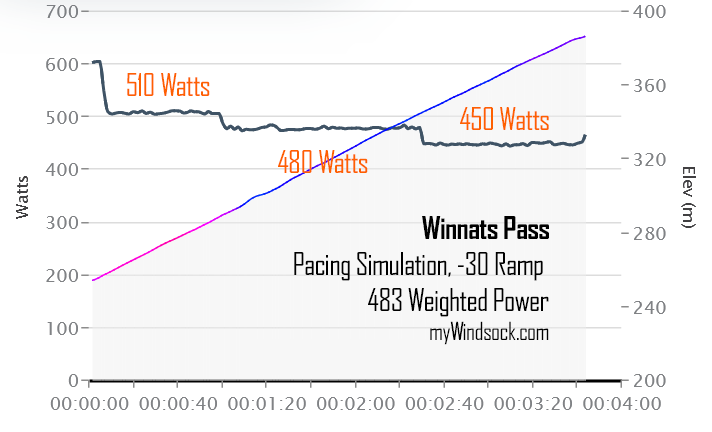
Next up, the Strong Finisher
This rider has tried the reverse method, building from 450 Watts to 510 Watts.
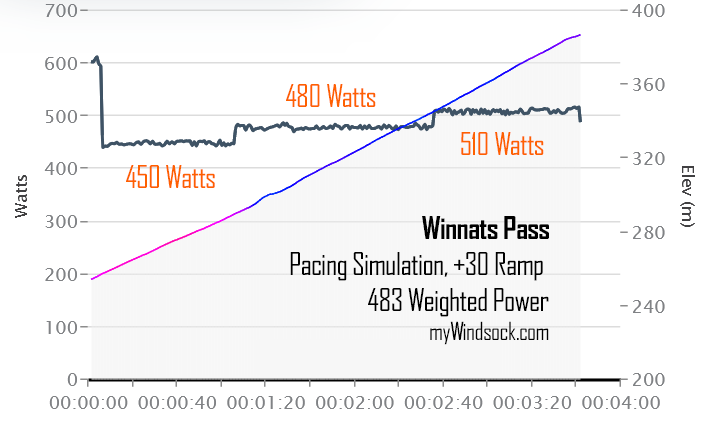
Who wins?
Let’s remember, we have adjusted these two riders efforts to ensure the same Weighted Power of 483 Watts.
| Competitor | Time |
| Big Starter | 3:43.2 |
| Even Pacer | 3:41.5 |
| Strong Finisher | 3:41.0 |
Let’s again look at the Last Change Delta to see how this race unfolded.
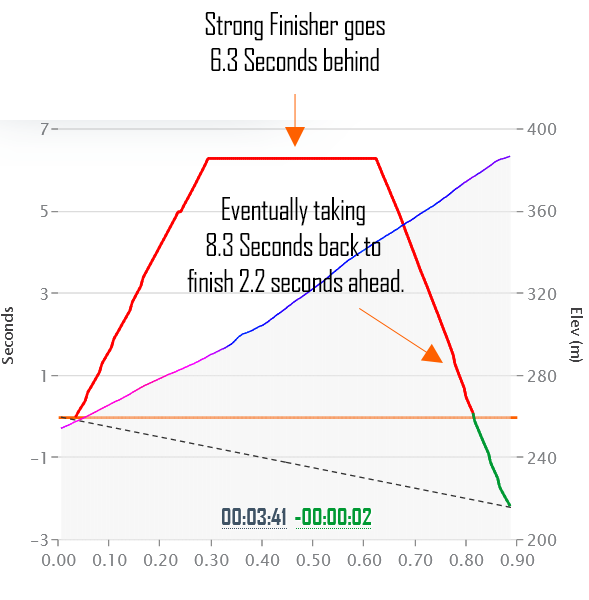
Conclusion
Measuring your effort at the start is likely to yield a better result than getting too carried away. The same overall power but differing pacing strategies resulted in a 2.2 second gain by the Stronger Finisher. Interestingly the Even Pacer, was only 0.5 seconds behind the Stronger Finisher. Just don’t fade at the finish.
Things to try, how much differential between the start power and finish. I did do a bit of tweaking and found a 60 Watt spread had the best return for the 75kg rider. I recommend trying this out for your own power and weight. See what happens when you increase or reduce the spread of Watts.




 UK Time Trial Events
UK Time Trial Events